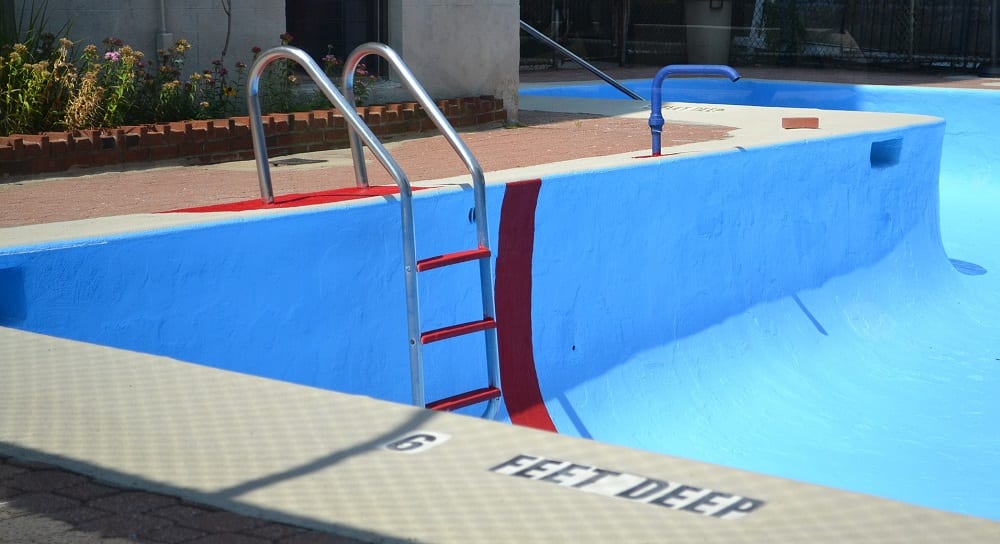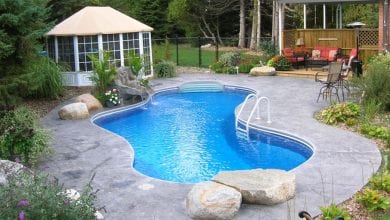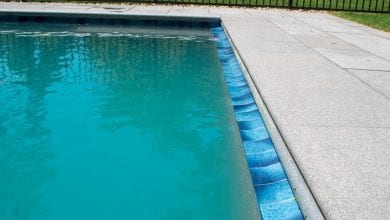
How To Drain A Pool?
It’s a daunting task, but any pool owner will have to know how to drain a pool at some point. This is especially going to be the case if returning to a holiday home where the pool water has been left for months on end, or at the end of the season where that above ground pool has served its purpose for a while.
So, before you put off this pool project any longer, we have created the following guide on how to drain it properly. There is more useful information related to the subject to help along the way. Let’s start with the following:
Why Do You Need To Clean A Pool?
It’s not very often that people will feel the need to clean their bath, and a pool even less so. Why then, would you need to clean a pool? Well the fact that this is not a task you should undertake often, especially for an inground pool, we get that the question is warranted. However, there are a few reasons.
Cleaning The Pool
Don’t worry pool owner, this does not mean it needs to be drained every week, we’re not talking about replacing the weekly/twice weekly clean. If you use a service then the maintenance team will be on top of this. The vacuum on the side of the pool will do a great job of keeping everything clean and getting rid of a lot of the debris and some of the dirt that clings to the walls.
Still, a pool that has high levels of calcium or metals will show signs in the form of stains. This means that it will require your attention. Thankfully this isn’t something that occurs regularly and it is more likely to be many years rather than months before there is a need to drain the pool for this reason. Metal stains are unsightly but calcium can have more of an impact on the walls and pool equipment meaning that repair work could become a real problem.
So, draining the pool and using an acid wash on the walls can be a sensible idea at this point.
Maintenance
A little repair work can be left for a while but over time, bubbles will start to form under the vinyl. This can be on the bottom of the pool or the walls and although it might not need immediate attention, the problem will only worsen and spread throughout the inner shell of the pool. A concrete pool may crack which can be a bigger problem.
At this point, you will want to drain the pool, fill any cracks, or patch the vinyl plaster up, possibly even replacing it altogether. The good news is that once this is done, it will be a long time before it needs to be done again.
Changing The Pool Water
No matter how good the pool maintenance, many pools are left with the same water for months, even years. If you can’t remember the last time you changed the pool water then you are not alone. It is the sort of project that many people intend to do, but it takes a long time for them to get around to doing it. Over the months, the level of TDS (Total Dissolved Solids) adds up to the point where filtering them out of the water is no longer possible.
When these levels reach a certain level, it can be difficult for the chemicals you add to the water to have the right effect. Although it takes a lot for it to reach an unsafe level, the cocktail of chemicals you need to add increases which means the pool is going to cost more to maintain.
At this point, lower the TDS levels become a challenge, then impossible. Draining the pool to refill it with clean water is the best approach.
Painting The Pool
The likelihood is that it has been a long time since the pool was painted. Years of sun exposure take their toll on anything that is left exposed, and this includes the pool lining. This is unlikely to impact the functionality of the pool, or how often you can use it, but a paint job is always going to be worth it. Most people tend to paint their pool every 3-5 years depending on it is looking.
When it comes to painting the pool, be sure to use specialist pool paint and one that is suitable for the type of pool you have. It can be a good idea to do all of the above when draining the pool. That way you do not need to repeat the process six months down the line.
Prepping A Pool Before Draining
As with any pool project, there is a level of prep work. Before draining a pool, the following needs to be done:
Have A Disposal Plan
Before you even start to ready the flow of water, think about where it’s going. It is unlikely that your lawn can handle the contents of a pool without suffering serious damage, not to mention what the level of chemicals in the water would do. This is only a concern with above ground pools – inground pools will be easier, but also have their cautions (but more on that later).
The local authorities may not allow you to drain the water into a storm drain so you have to think of an alternative plan. It might be possible to dispose of it down the sewage drain but again, it is best to consult with the local water company as they will be able to advise. For the sake of the environment (and to help you avoid a costly fine), be sure before you get started.
Get Rid Of The Chemicals
The water will have high levels of chlorine among other things, but reducing their levels is easy. By leaving them to dissipate and not adding more for a while. the UV rays from the sun will do the work for you. Check on the levels until it has a neutral pH level before disposing of the water. Again it is a good idea to check with the local water authority to be aware of what the chemical levels should be before starting.
If the repair work is urgent then you can use a quality chlorine neutralizer to get to the right levels faster.
Switch The Auto Timers Off
Even if the pool pumps are not operating at the time you plan to drain the water, switch the automatic timers off. This will benefit you for various reasons, including the fact that pool lights are colled by the water, so may shatter if they are not submerged. Also, the pump will benefit since it is colled by water and could be damaged if left on as well as allow air to move through the system which can cause further damage.
Wait For The Ideal Conditions
Although a sunny day is the best for draining a pool, blazing heat is not. This is why it is better to wait for a day that is bright and sunny without it being too hot. The pool lining and other parts are meant to be underwater so the heat and sun exposure can damage it. It is not uncommon for cracks to appear at this stage when left to the mercy of the sun.
Make sure the temperature is due to be below 85F. This can mean waiting for the peak summer to be over.
Have Everything Ready
This includes the tools and other items used for repair work. It is better to be good to go when it has been drained, rather than have to wait a few days before you can get started.
Draining An Inground Pool
We mentioned earlier that this task is the easiest in terms of the process, but can also be tricky in other ways. The infamous pool pop is something you will want to avoid for a start.
This means that when the pool is completely drained, it can pop out of the ground now that the water pressure is not pushing it down. This is a risk that can occur on any pool type, whether it is concrete, vinyl, or any other. A solution to this is to only drain half the water and refill it from there but this is only an option if the bottom of the pool does not require repair work, or you are not intending on painting.
If this is a concern then we recommend using a professional to drain the pool. Otherwise, avoid draining it in or after heavy rain as the ground will be soaked which can increase the chances of a pool pop. Leave a few days until the ground is completely dry before draining.
Make sure the water reaches the drain and does not spill onto the ground surrounding the pool as this can have the same effect as heavy rain. Look up how to release the pressure relief valves at the bottom of the pool for when to use them, and which ones.
Do Not Use The Pump
A lot of people will advise draining a pool using the pump but once the water levels go below the skimmer level, there is a risk of air getting trapped in the system. This can cause costly repairs. Although this method might seem convenient, there are other ways that are easy and can protect your pool from damage.
We recommend the following method for draining a pool:
Using a Submersible Pump To Drain A Pool
- Firstly, it is possible to rent a submersible pump rather than shelling out for one. Since this is a task you do not need to undertake often, renting can be a viable option.
- Start by gently placing the pump at the bottom of the deep end, resting on the floor. You will need to check that the power cord is long enough to reach and that the hose can reach the drainage point.
- As the pump works its magic, be sure to check on its progress regularly. Any flooding around the drainage point can be dangerous.
- When it is done, there will be a small puddle left behind. This is to be expected and can usually be mopped up or dried with a few towels if necessary. Unplug and remove the submersible pump.
- Open a pressure relief valve. This will allow any water below the pool to drain away and can help avoid the pool pop.
- Start the repair work if this is why you are draining the pool.
- Replace the pressure relief valve
- Refill the pool. This can require multiple hoses to ensure it is done faster.
- When full, switch on the pump, balance the chemical levels, and you have a pool full of freshwater.
How Much Does It Cost To Drain A Pool?
There is a reason why this is not a task that people do every few months, as there is an expense involved with draining a pool. Because a large pool can hold up to 20,000 gallons of water, you need to be prepared for a large bill.
How Long Does It Take To Drain A Pool?
Although this isn’t a task that can be done in a matter of minutes, for the large part, you do not need to be sat poolside and can go about your day. We’re not saying you should pop out and go to town, it is always best to keep an eye on the progress and pop back outside.
The time it takes for the pool to drain (and then refill) will largely depend on the size of the pool. The strength of the pump will also be a factor. How many gallons per minute that it can operate at is going to slow it down or speed it up. It could take anywhere between 7 – 14 hours for the pool to empty for average to large size pools.
When it comes to refilling the pool, expect a similar amount of time to what it took to drain it. Common factors include the rate the hose can pump put water, and the size of the pool again.
Conclusion
In truth, once you know how to drain a pool it doesn’t seem like rocket science. Still, there are some important elements to remember to ensure it is done safely and effectively. Now you can get on with those repairs you have been putting off, or just make your pool look as good as new.







